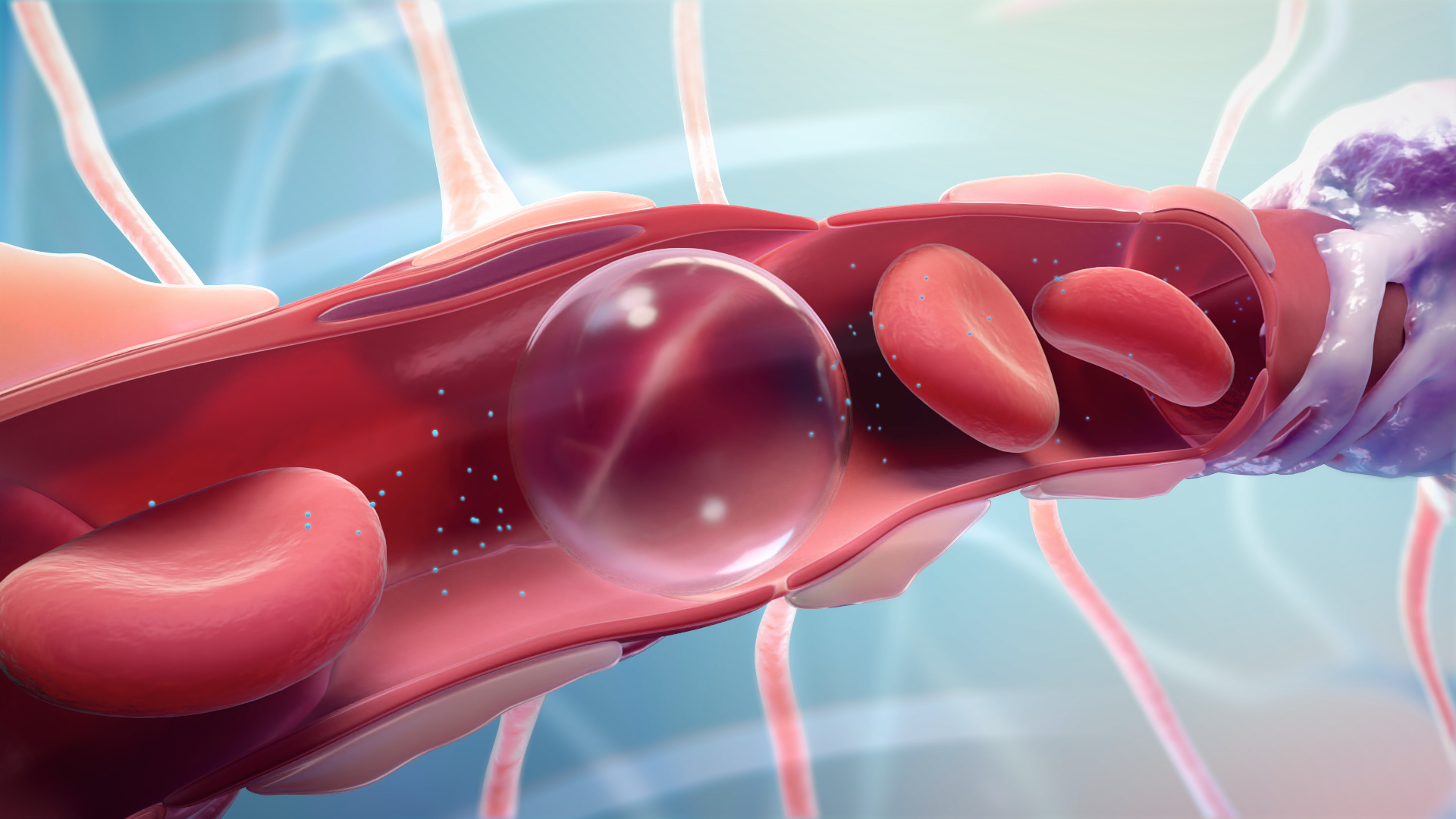Description: The blood-brain barrier (BBB) plays an important role in keeping pathogens and foreign substances from entering the brain, however it also impedes the entry of therapeutics. This has been a major obstacle in the discovery of drugs that can treat brain tumours and brain diseases such as Alzheimer’s and Parkinson’s.
This image is a still from an animation created with the scientific advisement of Dr. Isabelle Aubert, to communicate the research conducted at Sunnybrook Research Institute on transcranial focused ultrasound-mediated drug delivery to the brain. Focused ultrasound and injected microbubbles are used in combination to make the BBB permeable in a transient, non-invasive, and precise targeted manner, guided by MRI. The animation explains the procedure that the patient undergoes, and visualizes the molecular and cellular mechanisms by which focused ultrasound interacts with intravenous microbubbles to create brief and localized BBB “openings”. It also emphasizes the significance of the research in enabling the delivery of drugs that would otherwise not be able to enter the brain for treatment.
Why did you conduct this research? Before this project, there were no visual works that told the full story of BBB “opening” – touching on the entire procedure, mechanism, and resolution after treatment. The BBB “opening” mechanism itself is complex, so there was a need to communicate this research visually, to improve understanding and interest in the scientific community. 3D animation would be able to depict such complex interactions and processes with clarity, and to provide visual interest
Technique: 3D models were created with Autodesk Maya and Pixologic ZBrush, while referencing microscopy images. Lighting and textures were added to the 3D scene to add visual interest, and the rendered animation was composited in Adobe After Effects.
Acknowledgements: I’d like to acknowledge Professors Marc Dryer and Nick Woolridge from the Biomedical Communications faculty for supervising my project, and Dr. Isabelle Aubert for serving as the scientific content advisor. I also thank the Vesalius Trust for a grant toward funding this project.

